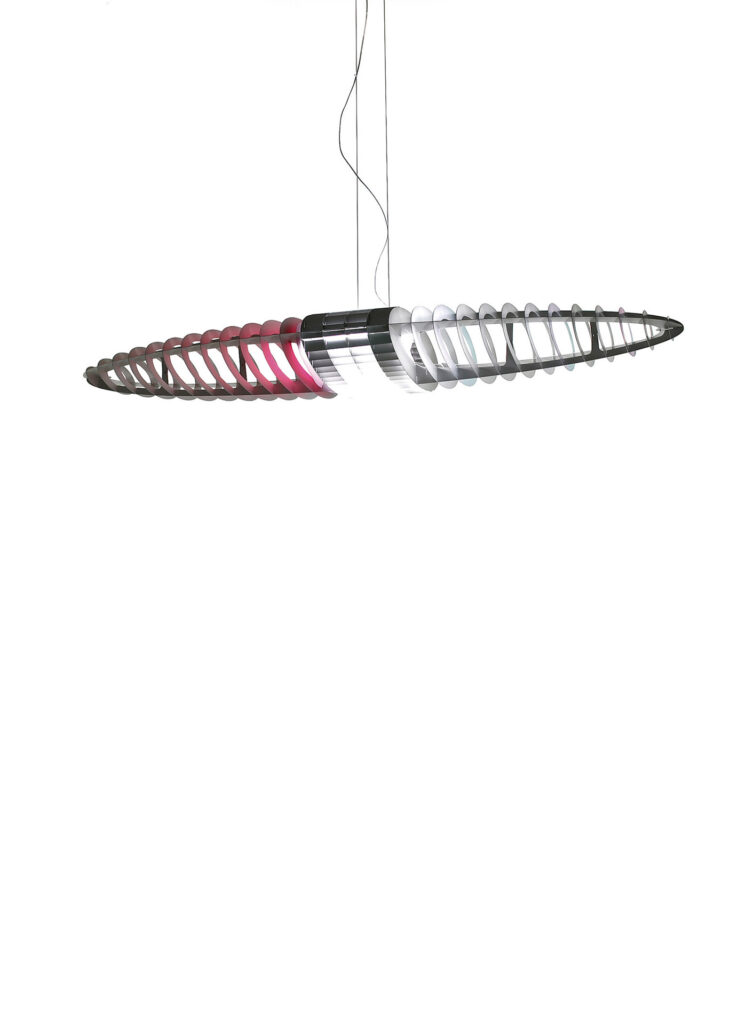Queen TitaniaSuspension
designed by Alberto Meda, Paolo Rizzatto
Doubled in size and visual impact, designed to light up large spaces. A pair of interchangeable filters make it possible to color the aluminium body without interfering with the white light emission.
Models
D17Q
Queen Titania

D17Q
Queen Titania
Main specifications
| Typology | Suspension | ||||||
|---|---|---|---|---|---|---|---|
| Application | Indoor | ||||||
| Material |
|
||||||
| Finishes |
|
||||||
| Dimensions (mm) | H 160, L 540, W 1400 | ||||||
| Weight (kg) | 3.05 | ||||||
| Light Source | 2xLED E27 ø max 38mm l 150 mm, 2x205W HSGST/F E27 | ||||||
| Insulation Class | I |




